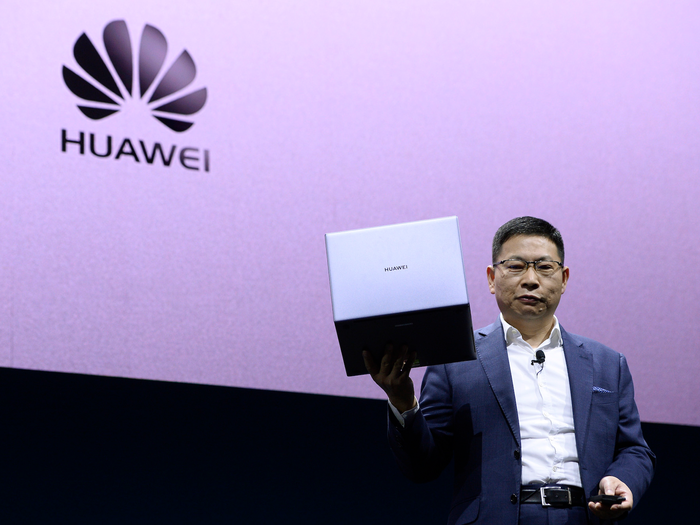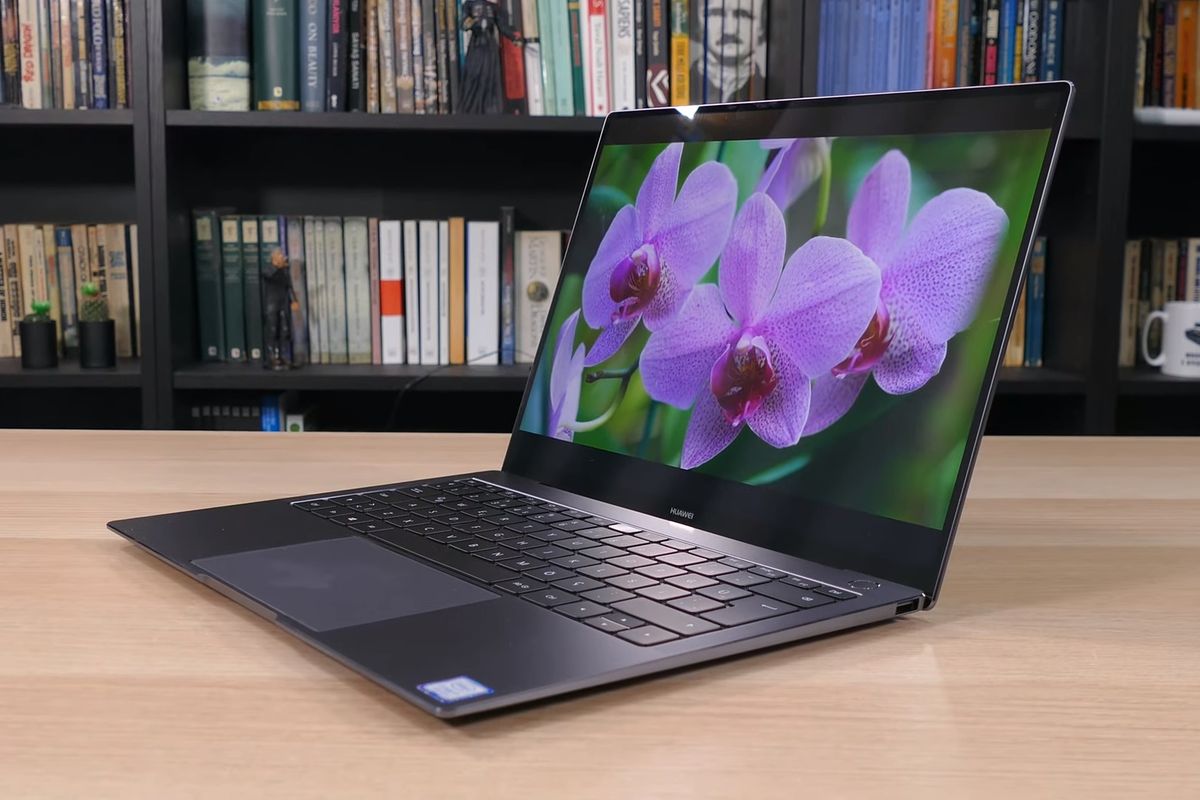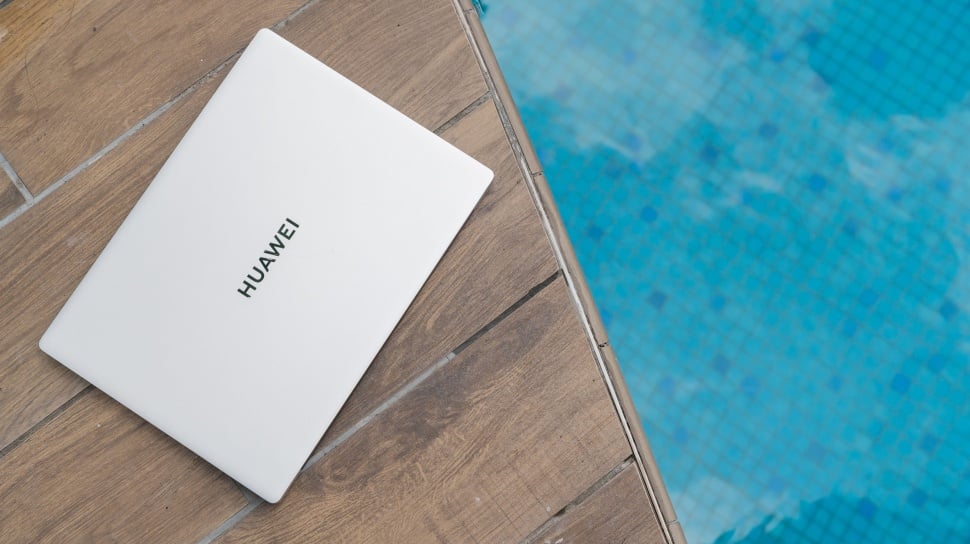Huawei, once renowned for its rapid rise in the consumer electronics and telecommunications industry, now finds itself at the heart of a controversy that could reshape its laptop market. The company is reportedly facing a potential ban on installing Windows on its laptop devices—a development that not only threatens Huawei’s market share but also sends ripples across the global technology ecosystem. This in-depth article delves into the background of this emerging crisis, examines its implications, and explores possible pathways forward for Huawei and its customers.
In recent years, Huawei has made significant strides in expanding its portfolio of electronic devices, garnering recognition for its high-quality smartphones, network equipment, and laptops. However, regulatory challenges and geopolitical tensions have forced the company into a precarious situation. Rumors of a Windows ban on Huawei laptops are now emerging as one of the pivotal issues that could further constrain the brand’s access to critical software and limit consumer choices.
This article provides a comprehensive review of Huawei’s predicament, elaborating on the factors that led to the situation, the potential impact on the market, and strategic responses that might help mitigate the crisis. Our discussion is underpinned by considerations of regulatory policies, international trade tensions, technical alternatives, and consumer behavior trends.
Background: Huawei and Its Expanding Laptop Lineup
Huawei started as a telecommunications giant and gradually diversified its products to include an impressive range of consumer electronics. In the laptop arena, the company has been recognized for its innovative designs, robust performance, and competitive pricing. Building on its success in the smartphone market, Huawei launched its laptop series to challenge established brands by offering cutting-edge technology and seamless integration with its broader ecosystem of devices.
A. Rise in Global Popularity
Over the last decade, Huawei’s laptops have earned acclaim for:
A.1. Performance: Equipped with high-end processors and capable graphics, these laptops are well-suited for both everyday tasks and high-demand applications.
A.2. Design: Known for their sleek aesthetics and lightweight construction, the laptops have appealed to professionals and students alike.
A.3. Ecosystem Integration: Seamless connectivity with other Huawei devices has created a unique user experience that leverages cloud services, mobile integration, and smart home connectivity.
B. Market Position and Competition
Huawei’s entry into the global laptop market disrupted traditional dynamics that had long been dominated by established players such as Dell, HP, and Lenovo. The company’s aggressive pricing and innovative features allowed it to carve out a niche, particularly in emerging markets and among tech-savvy consumers looking for affordable performance.
However, even with impressive features, the journey to success was met with challenges, including geopolitical tensions, trade restrictions, and international scrutiny. The current Windows ban situation is a direct offshoot of these accumulated pressures.
The Windows Ban: Factors and Context
The possibility of a Windows ban on Huawei laptops is not merely an isolated regulatory decision but rather the culmination of various complex factors. Understanding these factors is critical to gauging the full impact of this potential ban on both consumers and the larger tech industry.
A. Geopolitical Tensions and Regulatory Challenges
The global technology environment has been increasingly marked by geopolitical frictions. The strained relationships between China and several Western nations, particularly the United States, have led to a series of regulatory measures that target Chinese tech companies. Huawei has frequently been at the center of these measures.
A.1. Trade Restrictions: Over recent years, governments have tightened restrictions on the export of sensitive technologies. These restrictions have not only affected Huawei’s telecommunications hardware but now seem to extend to software licenses as well.
A.2. Security Concerns: National security has been cited repeatedly as a core reason behind the disallowance of critical software components. For instance, Windows—developed by Microsoft—is considered vital infrastructure in many corporate and governmental environments. Regulators argue that providing Windows to a potential competitor could pose cybersecurity risks.
A.3. Economic Sanctions: Economic sanctions have often been used as leverage in broader trade disputes. As part of these measures, companies like Microsoft may be required to comply with governmental directives when distributing their software to Huawei devices.
B. Microsoft’s Dilemma
Microsoft, the developer and distributor of Windows, is caught in the intersection of commercial interests and governmental pressures. On one side, Microsoft aims to maximize its market reach by ensuring its operating system is available across a diverse range of devices, including those from Huawei. On the other side, political and economic pressures from key allies and regulatory bodies challenge this mandate.
B.1. Compliance with Government Directives: Microsoft must navigate a complex regulatory landscape that may force the company to withdraw Windows licenses from Huawei laptops in specific markets.
B.2. Commercial Impact: Removing Windows from Huawei’s lineup would significantly impede Microsoft’s potential revenue gains in one of the fastest-growing segments of the Asian electronics market.
C. Impact on Huawei’s Software Strategy
In response to the growing regulatory challenges, Huawei has been vigorously working on alternative solutions. The company has invested heavily in developing its own operating system, HarmonyOS, as a long-term strategic substitute for the widely adopted Windows platform.
C.1. HarmonyOS Development: Initially designed for smart devices and Internet of Things (IoT) ecosystems, HarmonyOS is now being adapted for laptop computers. This transition could represent a bold shift in how Huawei positions itself in the global tech market.
C.2. Risks and Opportunities: While HarmonyOS offers a pathway for independence from Western technologies, its adoption in the laptop market remains uncertain. The software will have to prove itself capable of supporting the diverse needs of consumers ranging from basic productivity to high-performance computing tasks.
Impact on the Laptop Market
The potential Windows ban on Huawei laptops is set to have significant implications for various stakeholders, including consumers, competitors, and the overall tech ecosystem.
A. Consumer Implications
Consumers have come to rely on the Windows operating system for its user-friendly interface, extensive software ecosystem, and robust security features. A shift away from Windows could unsettle many users and spark a range of responses.
A.1. User Experience Changes:
A.1.a. Learning Curve: Transitioning to a new operating system like HarmonyOS may require consumers to adjust to new user interfaces and workflows.
A.1.b. Software Compatibility: Many legacy applications and enterprise software solutions are optimized for Windows, and their functionality could be compromised when ported to a new system.
A.2. Trust and Reliability:
A.2.a. Ecosystem Reliability: Consumers accustomed to the stability and continuous updates of Windows might be skeptical of alternative systems during initial rollout phases.
A.2.b. Support and Maintenance: The depth of support available from established Windows systems—including third-party developers—might be hard to match by a fledgling operating system.
B. Competitive Market Dynamics
Competitors in the laptop market are likely to leverage this situation either by capitalizing on the potential supply gap or by emphasizing their commitment to stability through consistent software support.
B.1. Opportunities for Competitors:
B.1.a. Market Repositioning: Established brands might seize this opportunity to attract consumers wary of switching to a new operating system.
B.1.b. Strategic Collaborations: Competitors might form alliances with software developers to innovate better user experiences that bridge any deficiencies exposed in Huawei’s new offerings.
B.2. Challenges for Huawei:
B.2.a. Brand Reputation: Huawei must manage perceptions about its commitment to delivering a seamless computing experience.
B.2.b. Innovation Pressure: The company may need to accelerate its innovation efforts to ensure that HarmonyOS—or any alternative solution—can match or exceed the performance standards set by Windows.
C. Industry-Wide Consequences
The controversy surrounding a potential Windows ban on Huawei laptops could initiate broader shifts within the technology sector, prompting companies to rethink their strategic partnerships and product developments.
C.1. Rethinking Software Ecosystems:
C.1.a. Innovation in Operating Systems: The industry might see a renewed focus on developing robust, independent operating systems that reduce reliance on dominant players like Microsoft.
C.1.b. Increased Fragmentation: Conversely, the market may become more fragmented, leading to challenges in compatibility, security, and long-term support for various user segments.
C.2. Regulatory and Trade Ramifications:
C.2.a. Policy Adjustments: Governments may revise existing policies or introduce new regulations that further challenge cross-border technology exchanges.
C.2.b. International Collaboration: There could be a push for greater international cooperation in establishing common frameworks for technology governance and digital trade.
Huawei’s Response and Future Outlook
In light of these developments, Huawei is not sitting idly. The company has taken several measures to prepare for and mitigate the potential fallout from a Windows ban on its laptops.
A. Strengthening HarmonyOS
Huawei’s investment in HarmonyOS is central to its strategy for maintaining control over its software ecosystem. The company is bolstering its research and development efforts, aiming to close the gap between HarmonyOS and established operating systems.
A.1. Enhancements Underway:
A.1.a. User Interface Improvements: Huawei is focusing on creating an intuitive, user-friendly interface that mirrors the familiarity of Windows while introducing novel features.
A.1.b. Enhanced Security Features: Recognizing the importance of robust security, HarmonyOS is being designed to include advanced security protocols that safeguard user data and minimize vulnerabilities.
A.2. Collaborations with Developers:
A.2.a. Developer Incentives: Huawei is launching initiatives and offering incentives to third-party developers to create a wide array of applications compatible with HarmonyOS.
A.2.b. Open Ecosystem: The company is working to build a developer-friendly environment that fosters innovation and rapid application development, ensuring that HarmonyOS can support both legacy and modern software demands.
B. Diversifying Software Partnerships
While the transition to HarmonyOS is underway, Huawei is also exploring temporary solutions to keep its laptops attractive for diverse customer bases.
B.1. Alternative Operating Systems:
B.1.a. Linux-Based Solutions: Some analysts suggest that Huawei could opt to integrate popular Linux distributions as interim alternatives. Linux systems offer robust performance, extensive customizability, and strong security features, which could cater well to advanced users.
B.1.b. Collaborations with Niche OS Providers: Huawei could also consider partnerships with smaller operating system providers who are looking to expand their market reach.
B.2. Maintaining Consumer Confidence:
B.2.a. Clear Communication: Ensuring transparency with consumers about software changes is paramount. Huawei must communicate the benefits and expected improvements associated with any new operating system being deployed.
B.2.b. Customer Support Initiatives: Launching comprehensive customer support services—including online tutorials, forums, and dedicated helplines—can smooth the transition and enhance user satisfaction.
C. Strategic Adaptations in Marketing
In addition to its technical and software innovations, Huawei must adapt its marketing strategies to manage the brand reputation crisis effectively. The narrative surrounding a Windows ban is sensitive, and strategic messaging is vital.
C.1. Rebranding Initiatives:
C.1.a. Emphasizing Innovation: Huawei’s marketing communications should underscore the company’s commitment to innovation and technological independence.
C.1.b. Highlighting Ecosystem Synergy: The company should promote the benefits of its interconnected device ecosystem, positioning HarmonyOS as an integral component of a broader, forward-thinking strategy.
C.2. Public Relations Management:
C.2.a. Transparency with Stakeholders: Ensuring that investors, customers, and partners are kept informed can mitigate uncertainties.
C.2.b. Leveraging Thought Leadership: Huawei can engage with industry experts and thought leaders through interviews, conferences, and published insights to reinforce its strategic vision and commitment to quality.
Expert Opinions and Market Analysis
Industry experts have weighed in on the potential impact of a Windows ban on Huawei laptops, offering insights and forecasts for the future.
A. Analysis from Tech Industry Analysts
Several analysts suggest that the potential prohibition of Windows on Huawei laptops might have a profound impact on the consumer electronics sector.
A.1. Market Share Shifts:
A.1.a. Short-Term Disruptions: In the immediate aftermath, consumers may react with caution, leading to temporary declines in sales as buyers await the performance of alternative operating systems.
A.1.b. Long-Term Trends: Over time, Huawei’s ability to stabilize its software ecosystem could result in a reconfigured market share, with some segments migrating to competitor brands and others embracing the innovations of HarmonyOS.
A.2. Geopolitical Ramifications:
A.2.a. Impact on Global Supply Chains: The Windows ban could force companies to reexamine their supply chain relationships, prioritizing partners that are less exposed to geopolitical risks.
A.2.b. Investor Sentiment: The uncertainty surrounding Huawei’s software capabilities may influence investor sentiment, leading to volatility in the stock prices of both Huawei and its partners.
B. Views from Security Experts
Security experts are divided over the implications of adopting a new operating system in place of Windows, which has been a staple for its security features in corporate and government settings.
B.1. Potential Security Enhancements:
B.1.a. Advanced Security Protocols: Proponents argue that HarmonyOS could integrate cutting-edge security features, making it competitive with, or even superior to, Windows in protecting against modern cyber threats.
B.1.b. Vulnerability Concerns: Critics, however, warn that the early stages of any new operating system are susceptible to bugs and security vulnerabilities, which could leave users exposed to attacks until the system matures.
B.2. Recommendations for Users:
B.2.a. Adopting Security Best Practices: Regardless of the operating system, security experts emphasize the need for users to adopt robust security measures, including regular updates and the use of reputable antivirus software.
B.2.b. Ongoing Monitoring: Users should be proactive in monitoring security developments related to HarmonyOS, and Huawei must ensure that patches and updates are rolled out promptly to address any emerging threats.
Broader Implications on the Tech Ecosystem
The ramifications of a Windows ban on Huawei laptops extend beyond the immediate stakeholders, influencing broader trends in the technology landscape.
A. Shifts in Software Dependency
This scenario highlights the inherent risks of over-dependence on a single dominant software provider. The potential transition away from Windows by a major player like Huawei might encourage other companies to explore alternative operating systems, leading to a more diversified software ecosystem.
A.1. Innovation Incentives:
A.1.a. Encouraging New Entrants: A diversified market may invite new operating system developers to invest in creating robust, secure, and versatile platforms.
A.1.b. Competitive Pressure: The competitive landscape could benefit consumers by fostering innovation, driving technological improvements, and reducing the risks associated with monopolistic dependencies.
A.2. Long-Term Stability:
A.2.a. Reducing Concentration Risks: A multi-platform ecosystem ensures that the failure or regulatory issues faced by one platform do not paralyze the entire sector.
A.2.b. Strengthening Cybersecurity: Diverse software ecosystems create redundancy and resilience, bolstering overall cybersecurity across the industry.
B. Impact on International Technology Policies
The emerging situation with Huawei might serve as a case study for the increasing role of national policies in shaping technology markets. Countries and regions could reconsider their regulatory frameworks, balancing the need for security with the imperative of technological innovation.
B.1. Policy Revisions:
B.1.a. Regulatory Overhauls: The dynamics at play could inspire governments to review and possibly relax certain restrictions, especially if a consensus emerges about the benefits of a competitive software market.
B.1.b. Global Standardization Efforts: International bodies may also consider introducing standard guidelines that address cross-border software sales and technology transfers in a more balanced manner.
B.2. Economic Implications:
B.2.a. Market Confidence: A clear and balanced regulatory environment can restore market confidence, thereby attracting investments and spurring innovation.
B.2.b. Trade Dynamics: The decision to impose or lift bans on crucial software licenses will continue to influence trade relations and economic policies across the global stage.
Consumer Adaptation and Future Prospects
Amid uncertainty, consumers are left to decide whether to stick with Huawei’s new offerings or transition to alternative brands. How users adapt will be instrumental in determining the long-term impact of this crisis.
A. Evaluating the Pros and Cons of the Switch
Consumers must weigh several key factors when considering a shift in their operating systems:
A.1. Learning Curve:
A.1.a. Ease of Transition: While HarmonyOS promises an intuitive design, adapting from Windows may require time and effort for users accustomed to the latter’s interface.
A.1.b. Availability of Tutorials: The success of this transition can depend greatly on the availability of educational resources, such as online tutorials and community forums that facilitate learning.
A.2. Software Compatibility:
A.2.a. Business Applications: Enterprises that rely heavily on legacy software must assess whether HarmonyOS or any alternative system will support their essential applications seamlessly.
A.2.b. Game and Multimedia Support: Recreational users need to consider if the new operating system can provide a comparable experience for gaming and multimedia applications.
B. Developing Resilience Through Adaptation
Huawei’s response strategy aims to cushion the impact on its user base by ensuring that its products remain competitive despite the regulatory setback.
B.1. Enhanced After-Sales Support:
B.1.a. Technical Assistance: Strengthening customer service through dedicated support channels can help address the concerns of users during the transition.
B.1.b. Feedback Integration: Actively incorporating user feedback into software updates can foster a sense of community and trust with the brand.
B.2. Community-Building Initiatives:
B.2.a. User Groups and Forums: Establishing official user groups and forums can facilitate shared learning experiences and help build a collaborative environment for troubleshooting and innovation.
B.2.b. Developer Engagement: Partnerships with independent developers to create bespoke applications can improve user retention and satisfaction.
Potential Strategic Responses from Microsoft and Other Players
The unfolding situation may also prompt significant strategic recalibrations among other major technology players, particularly Microsoft, which stands to be affected by changes in Huawei’s software policy.
A. Microsoft’s Balancing Act
Microsoft must balance its commercial interests with geopolitical realities. The company’s response may include:
A.1. Negotiating Terms:
A.1.a. Special Agreements: Microsoft might negotiate special licensing agreements or carve out exceptions to ensure continued access to critical markets.
A.1.b. Localized Solutions: Tailored solutions for different regions may be introduced, allowing some markets to continue accessing Windows while others transition to alternative models.
A.2. Technological Innovations:
A.2.a. Cloud-Based Enhancements: Microsoft could accelerate the integration of cloud services to complement a potentially fragmented software environment.
A.2.b. Security Reinforcements: Expanding cybersecurity measures and rapid response frameworks to address any emerging vulnerabilities in non-Windows environments may be prioritized.
B. Collaboration Among Industry Giants
This period of uncertainty might catalyze new alliances within the tech industry as companies look for synergies to counter the regulatory disruption.
B.1. Inter-Company Alliances:
B.1.a. Joint Ventures: Technology companies, including smaller operating system developers and hardware manufacturers, may form joint ventures to create alternative platforms.
B.1.b. Standardization Consortiums: Forming consortiums to establish industry standards for operating system interoperability could be a long-term solution, reducing dependency on any single provider.
B.2. Research and Development Initiatives:
B.2.a. Shared Resources: Collaborative research projects can accelerate the development of new, secure, and user-friendly platforms that break away from established software paradigms.
B.2.b. Open-Source Movements: Increased interest in open-source operating systems may complement these efforts, providing more accessible alternatives to proprietary systems.
Conclusion
The potential ban on Windows for Huawei laptops is not just a fleeting regulatory hiccup; it is emblematic of broader shifts in the global technology landscape. At the nexus of geopolitical tensions, commercial interests, and technological innovation lies an evolving crisis that could redefine software ecosystems and consumer expectations. For Huawei, this crisis represents both a challenge and an opportunity—a chance to pioneer an independent operating system and reinforce its position through enhanced innovation, strategic partnerships, and transparent consumer support.
While uncertainties remain regarding the technical and operational viability of alternatives like HarmonyOS, Huawei’s proactive measures indicate a commitment to overcoming these obstacles. In the dynamic interplay between political forces and market demands, the outcome of this controversy will likely leave a lasting impact on not only Huawei’s future but also on the worldwide tech community at large.
Navigating this uncertain terrain will require resilience, adaptability, and a willingness to embrace change—qualities that Huawei has historically demonstrated. As consumers, industry players, and regulators continue to observe these developments closely, the unfolding narrative promises to offer lessons on the intricate balance between technological progress and geopolitical realities.














